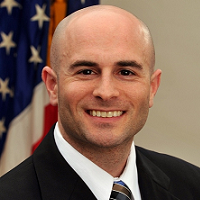 By Steven Posnack, M.S., M.H.S., Deputy National Coordinator for Health Information Technology
By Steven Posnack, M.S., M.H.S., Deputy National Coordinator for Health Information Technology
Twitter: @ONC_HealthIT
Steven’s Twitter: @HealthIT_Policy
In a field like health care where precision can mean saving a life, one irony I often reflect on is how unclear we’ve been about “sex” and “gender.” Among many anecdotes, this includes at times putting the prefix “administrative” in front of each to inexplicably constrain the meaning in ways that are rarely universally understood.
While this may seem like a whole lot of hullabaloo, disambiguating (I play SCRABBLE®) the meaning, context, and expected use of sex and gender identity can have substantive quality and safety impacts on a person’s care. This ranges from missing preventative screening notifications to inaccurate reference ranges on lab tests all the way to denied claims because the patient’s “administrative sex” on the clinical side didn’t match their “gender” on the health insurance side.
All of these experiences are why it’s so important to “get this right” as we look toward a future where decision support rules drive clinical workflow, artificial intelligence/machine learning algorithms identify new patterns, and more automation is introduced into health care. In early October, my distinguished co-authors and I published an article in the Journal of the American Medical Informatics Association (JAMIA), which described the Health Level Seven International (HL7®) Gender Harmony logical model as a potential approach to improving the “accurate representation of clinical sex and gender identity in interoperable clinical systems.”
While the approach described in the Gender Harmony logical model anticipates the need for future health IT system and workflow changes, it also thoughtfully built in a way to enable the continued use of legacy data, referred to as “recorded sex or gender,” to give context to existing transactions while more accurate data is captured and exchanged over time. Importantly, our article identifies the need for a new “sex for clinical use” that is a “sex classification element based on one or more clinical observations such as an organ survey, hormone levels, and chromosomal analysis.” The model also elaborates on how to represent “gender identity,” “name to use” and “pronoun.” Future interoperable transactions including this information will provide the specificity and precision that’s sorely lacking right now.
Yes, it will take time to see these new concepts take shape in the health IT ecosystem. But as we look to promote a more inclusive health care system it is hard work worth doing. I encourage you to engage in this HL7 community and check out the paper, which we’ve made open access to all.
This post was originally published on the Health IT Buzz and is syndicated here with permission.
